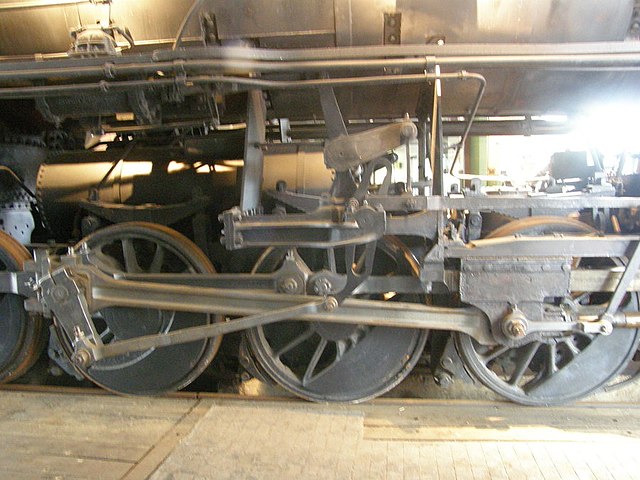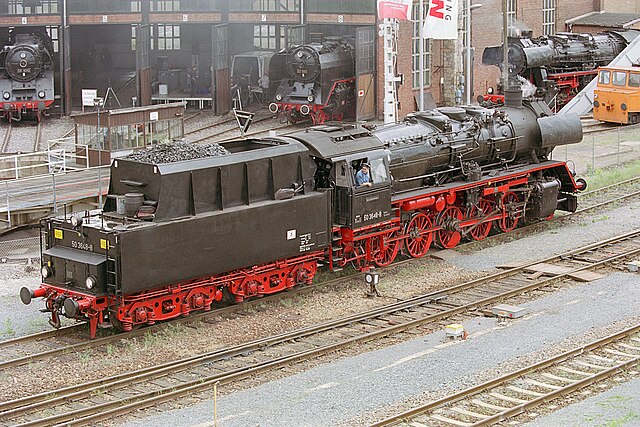Under the Whyte notation for the classification of steam locomotives, 2-10-0 represents the wheel arrangement of two leading wheels on one axle, ten powered and coupled driving wheels on five axles, and no trailing wheels. This arrangement was often named Decapod, especially in the United States, although this name was sometimes applied to locomotives of 0-10-0 "Ten-Coupled" arrangement, particularly in the United Kingdom. Notable German locomotives of this type include the war locomotives of Class 52.
Pennsylvania Railroad I1s Locomotive
Seaboard Air Line #544, one of over 200 undelivered Russian Decapods. It resides at the North Carolina Transportation Museum. Note the smaller boiler diameter, compared to the I1s above
The same Russian Decapod, showing the large gap between the boiler and drivers, typical of locomotives designed for Russia
A BR50
The Whyte notation is a classification method for steam locomotives, and some internal combustion locomotives and electric locomotives, by wheel arrangement. It was devised by Frederick Methvan Whyte, and came into use in the early twentieth century following a December 1900 editorial in American Engineer and Railroad Journal.
Whyte notation from a handbook for railroad industry workers published in 1906





